INTERVIEW
MITCH PAONE
Mitch Paone is the creative director of New York and Chamonix-based creative agency DIA Studio.
DIA Specializes in corporate and cultural visual identity systems, graphic design, and
typography. DIA’s signature use of motion and generative tools has led to significant
collaborations with clients such as Squarespace, Balenciaga, Pinterest, Nike, Saint Laurent,
Apple, and many more. Additionally, Mitch lectures and leads workshops at conferences and
universities worldwide. Most notably, Zurich University of the Arts (ZHdK), Ecole cantonale
d’art de Lausanne (ECAL), Pratt Institute and the School for Visual Arts in New York.
Mitch recently held positions at Haute école d’art et de design, Genève (HEAD – Genève) and The
Royal Academy of Art, The Hague (KABK). In his courses, he implemented DIA’s creative process
into the academic curriculum, specifically focusing on motion and generative tools in a graphic
design context. Mitch and DIA studio partner Meg Donohoe are AGI (Alliance Graphique
Internationale) members. Mitch is also a performing jazz pianist, composer, and type designer
beyond DIA and academic endeavors.
I first discovered Mitch’s work when I was an undergraduate student finishing my degree at
UCLA. Mitch gave a lecture on kinetic typography and I was blown away by Mitch’s unique
approach. He was thinking about typography the same way that many musicians think about their
instrument. Typography for Mitch was about the input and the process. Since then I’ve looked up
to his work tremendously and have given his talks and lectures as part of the supplemental
material I give to students when teaching motion design. For the mix that comes with this
publication, Mitch contributed a piece of his original jazz music titled Resolution which I felt
complimented the interview well.
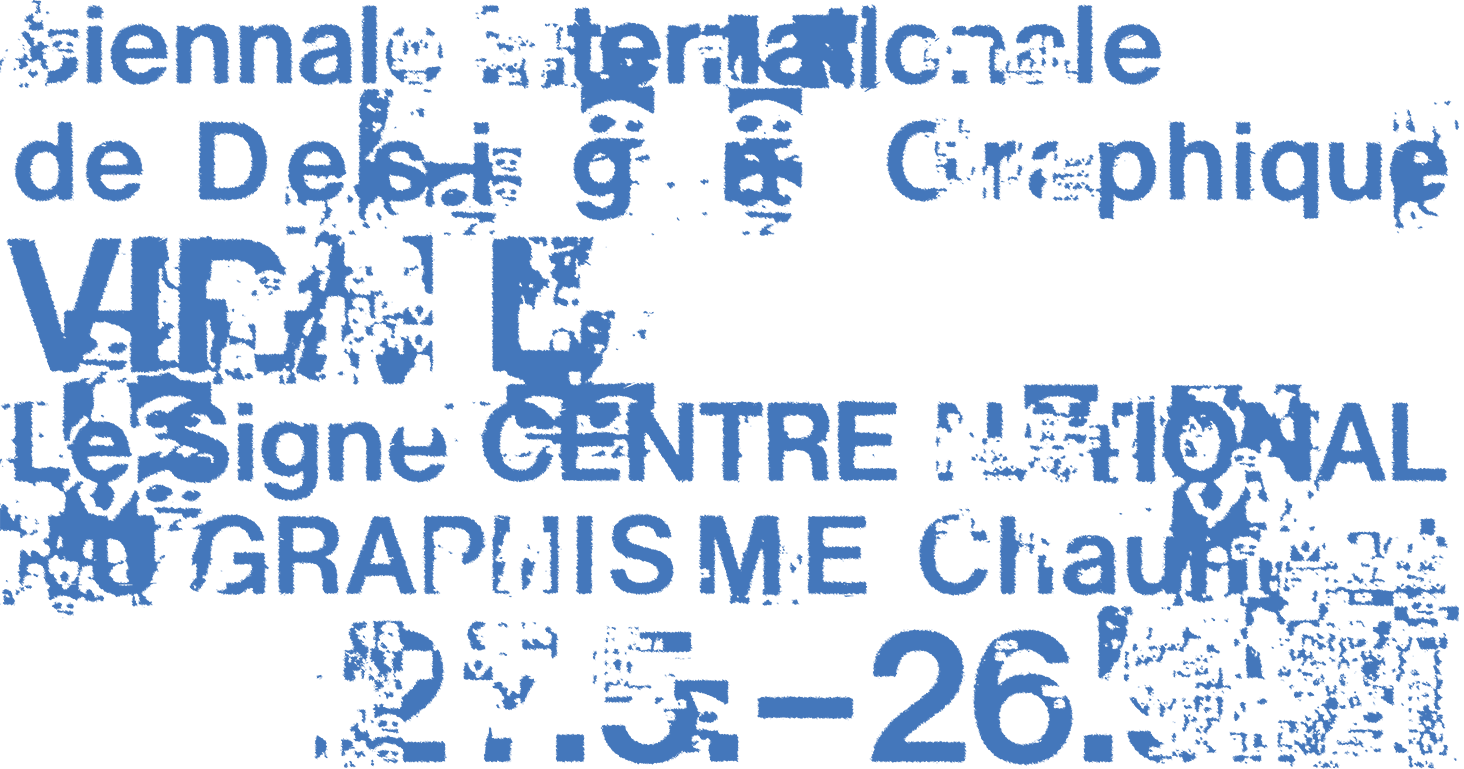
↑
DIA Studio identity for Chaumont Biennale, 2021
CVA
Noise is interesting because it’s almost impossible to clearly define. For instance, there are
noise algorithms, psychological noise, noise music, etc. Some similarities might be this idea of
the unpredictable, but it’s open to interpretation. One example would be a noise generator, and
the key idea is the unpredictable nature of the algorithm.
I know you are a jazz musician as well as a visual designer, and jazz specifically has a unique
angle on noise, because of the improv nature of the medium. What are your thoughts on noise,
both as a musician and as a designer?
MP
Noise is the particles and waves that I’m being inundated with. It is actual atoms moving in
the air that our ears respond to. So it is something that is felt by our ears. Maybe that’s more
of a physics definition. But that’s the same thing musically. Our ears are dealing with
something harmonically or in dissonance. It essentially depends on how the waves are lining up
within our ears and whether that’s pleasing or not, as it’s the organization of those atoms or
particles we’re reacting to that constitutes noise in its multitude of forms.
Musically, that’s why we have scales and harmonics, because that’s tuned to human hearing.
We’ve developed whole theories around certain chords, etc. And then, huge art forms have been
developed because of those theories that are present in music in general, whether that’s
composition, jazz, classical, etc. It’s wild to think that essentially, at a certain point, we
were cavemen. Then we created this massive language that tries to define sound in a certain way.
CVA
What do you think about visual noise? DIA has been posting some work recently of textural
elements that some would call noise. How does visual noise influence you as a designer?
MP
It’s pretty much a visual direct translation. If you think of things that are more harmonic or
melodic, there is more organization in the rhythm of what’s happening visually. There’s a system
there. There’s some sort of pattern that’s happening.
If you’re familiar with working in 3D software or generative design, you can play with
different noise parameters to create a certain feeling out of the work being more symmetrical,
asymmetrical, and random. That’s essentially the same as if I’m playing with waveforms on a
synthesizer to develop a sound. It’s just the visual version of it. I see them directly as a
one-to-one equal. It’s the visual translation of how we see things. Although in a design sense,
it’s more abstract, and musically, it’s a little easier to understand. If I’m creating a visual
system or visual identity, it’s more complex than something like a saw wave on a synthesizer.
But we’re still getting at the same thing, pattern recognition and development.
↑
Common waveforms found on synthesizers
CVA
In your interviews, you describe yourself as a musician first and then a designer. In many ways,
I think of myself in the same way. Being a musician has translated into the way I think about
design work. For instance, if I have an After Effects file or a Processing sketch, it feels like
I’m playing an instrument.
There’s a quote from the professor Sister Corita Kent in her Ten
Rules for Students and Teachers. Rule number 8 says, “Don’t try to create and analyze
at the same time. They are different processes.”
DIA’s process is described as input → improv or experimentation → output. You’re a jazz
pianist, and part of playing jazz is creating music in the moment and not having time to
analyze. Can you speak about the difference between making something and then analyzing it?
MP
From a creative standpoint, that’s the ultimate goal. To find a space where you can freely
create without criticism. And if you’re coming from a music standpoint, especially in jazz, it’s
crucial that you don’t think too much about what you’re playing. You’re reacting to the moment
in time. It forces you to be in that space. Therefore because I’m a musician first, it allows me
to get into a sort of psychological space, if I’m iterating in design or working on art.
There’s another quote I go to from studying Eastern Philosophy and Zen in college. “Analysis
leads to paralysis.” And it’s true. As soon as you start to compare something you’re doing to
others, or you’re worried about some technical aspect when you’re making work, it freezes the
flow of creativity, and that is an extremely important thing.
I talk about the input, and output, before and after. But that “before” is the practice. That’s
the time when you work everything you need to before it’s time to get down and make something.
That’s your taste, your intuition, all that stuff that goes into just how you react to things.
That voice in your mind that is providing critical thoughts should ultimately vanish during
that point of the best creative moment. As a musician, it’s easier to do that. With design, it’s
harder because you can be in a judgment mode if you make a composition. The flow of time during
music performance isn’t there. So that needs to be forced. It’s easier to see, “Oh, it’s not
working.” But there are other ways to iterate in a certain way that gets you through some of
those roadblocks.
With students, I deal with all of these things. I tell them, rather than trying to move shit
around on a poster to make it look good, just make a hundred posters fast. You’re going to
discover a few in there that have what you were looking for because you weren’t thinking too
much about it. You’re just getting in the flow, just making stuff rather than analyzing and
trying to make it perfect all the time. It never works. You’re never going to hit that “thing”
if you’re trying to analyze it.
So I think what Sister Corita Kent said is spot on. But that’s hard. It’s a difficult thing to
do.
↑
Generative design system by DIA Studio for smlXL, 2022
CVA
What has teaching taught you about design, and how has it influenced your practice?
MP
Teaching is fascinating because you have to treat every individual student as an individual
person. I can’t apply a methodology in a universal way over everyone. I have to react to each
person differently, feel them out, and see what’s going to make them tick or not. So it does
require a very intimate understanding or relationship to be developed with the student. And even
if you have a large class, you still have to do it. There are no shortcuts. And it requires an
incredible amount
of patience.
Everyone’s skills are different, their interests are different. So it forces you to have to get
to know the person well and to work with them in a way that’s going to make them feel excited
about doing the work, and then make the work related to stuff they’re interested in. We can all
make good design and typography but ultimately, that’s just design. I try to ask students, what
else are you interested in? What other things can get you pumped up about a design project? For
instance, if you’re into food, music, or photography, find what’s interesting to you, and then
merge that into your design work. It ultimately becomes more personal, and more interesting.
Patience is key. Even with the team at DIA, it’s just how we work together. Everybody is very
different. It’s understanding how to support the strengths of the individual as much as
possible, to give the best performance, to get them to the space where they can not be critical
of themselves and make work. That’s the role of a teacher, and it is very similar to the role of
a creative director. You’re just trying to create an atmosphere for people to do the best they
can.
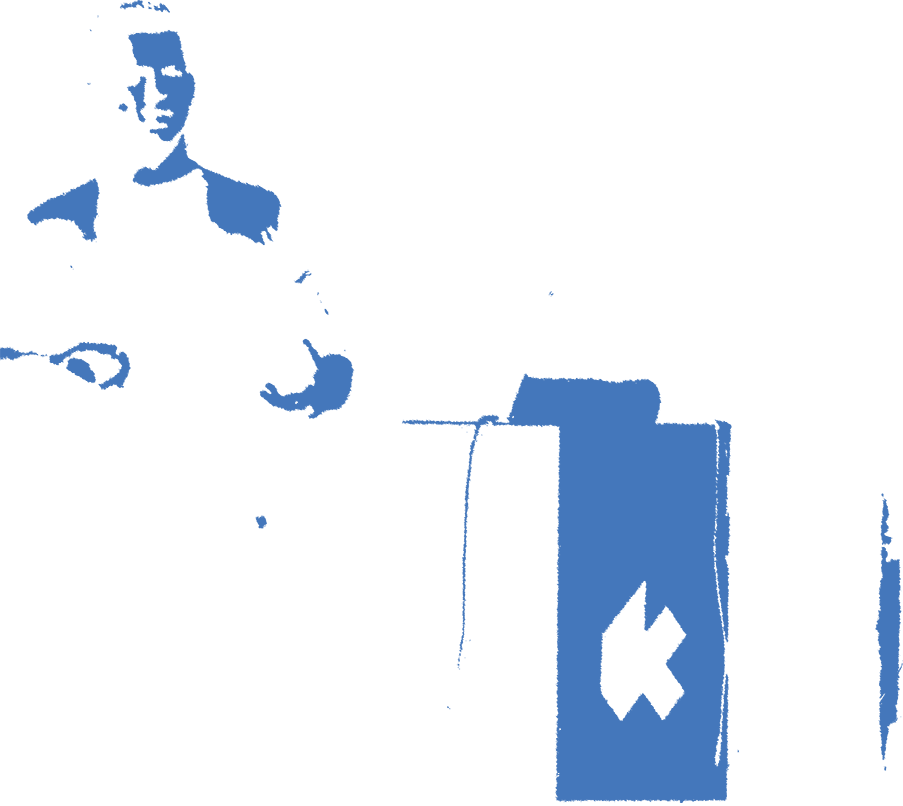
↑
Mitch Paone at KIKK Festival, 2021
CVA
That’s amazing, thank you. During some of your public lectures, you talk about the hundreds of
outputs for a project DIA will create before deciding on which ones to show clients. There’s
this huge array of different types of graphic forms and ways to treat type and movement.
What’s the process of deciding what sticks after living in this creative flow? How do you
treat
being analytical? And at what point is the work finished?
MP
It depends on the client and the project. I don’t want to oversimplify things, but let’s say
that there are two client types. There are branding jobs for clients that have little
understanding of the process and you do have to do a lot more education. You have to mock stuff
up. You have to make stuff look finished. Then, there are clients with their internal creative
team.
In our case, a lot of our projects have creative teams on the other side. Most of the big tech
companies we work with have creative departments with really talented people. So it gives us the
luxury of being more open. In that case, we’re very transparent. It’s like, “Hey here are some
buckets and territories of exploration.” Those creative teams know the company better than we
do. So they can see how these things could potentially be applied. Then, we just have a larger
discussion over a big body of work that consists mostly of sketches, little iterations, and
unpolished pieces. But also we have trust in them that they can see that these things can come
to life into a very
practical matter.
If you don’t have the luxury of a creative team to work with on the client side, we have to
internally decide; “Okay, here are the directions out of this mess that we feel the strongest
about.” Less than a day before the presentation of the actual work needs to go, that decision is
made. So what we want to do is iterate right up until we don’t have enough time to mock stuff
up. And then, really, it’s very fast. Collectively we decide which ones are interesting, and put
them into a presentation. There are never a ton of meetings. All of the decisions happen right
before the mockup stage, because essentially what you’re forcing yourself to do is to just let
your gut decide.
If you give yourself too much time, you start to overthink it. It just needs to feel good. And
those decisions happen quickly. If you have technical chops and good typographic skills, it’s
pretty easy to make good-looking stuff. But it’s not easy to make things impactful or strong,
because you’d have to go through an iterative process to get to that point. We can always fall
back on a grid and some good typefaces. But even there, the selection of a typeface is crucial,
you go through thousands of options before one feels right. Ultimately though, final decisions
need to be quick for it to feel right.
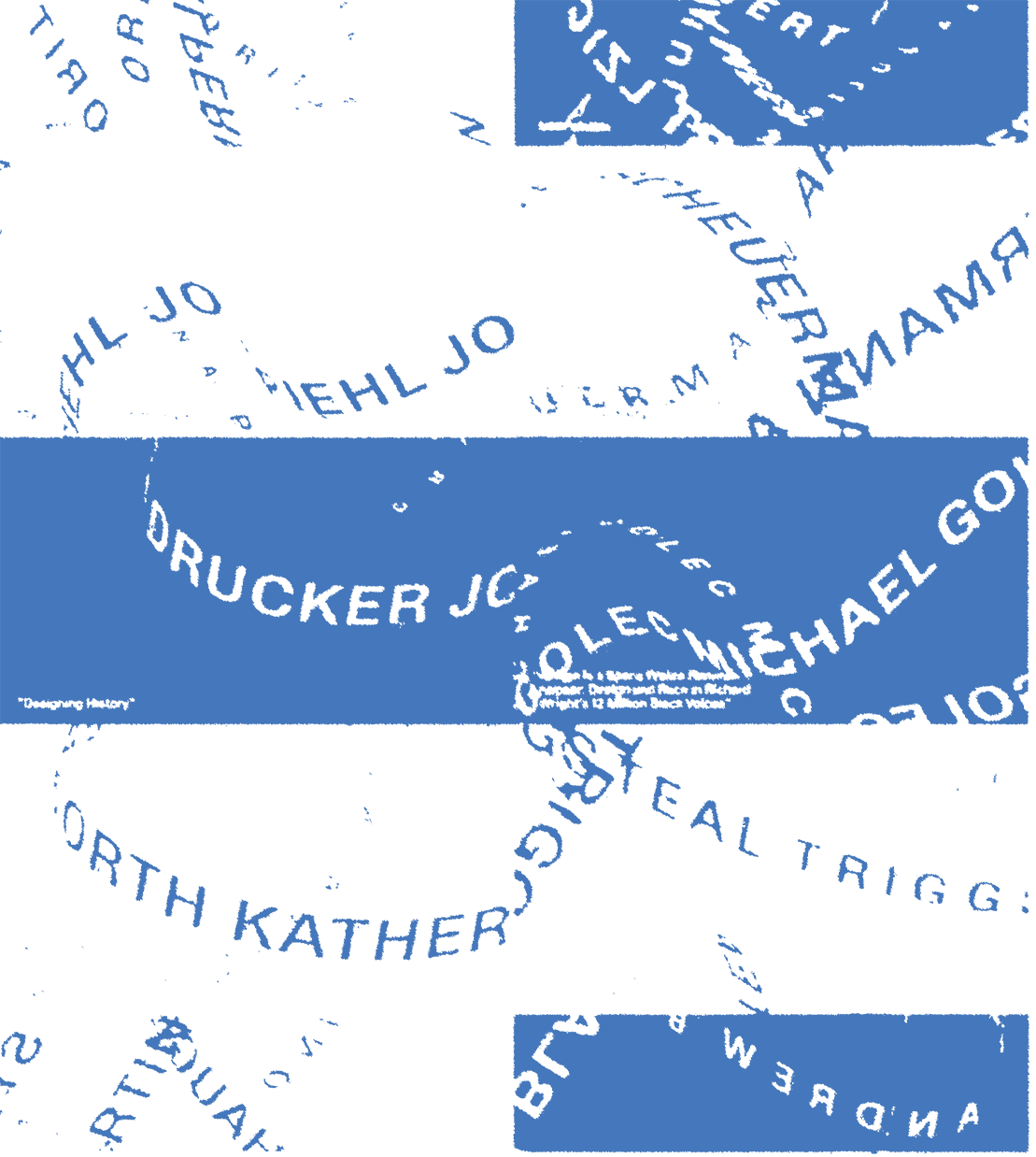
↑
DIA Studio for MoMA’s It Wasn’t Written symposium, 2018
CVA
Thanks, that makes sense. I’ve seen two different versions of outputs that DIA gives clients
(but I’m sure there’s more.) One output is the more “classic” approach, where DIA gives clients
finished rendered videos, or templates to make and create these videos. The other output
involves creating custom tools, which then the client uses to create their work.
I’m thinking specifically about the work you did for Space 10, where you gave the client a
tool that can render custom videos for assets. The tool you created reminded me of a
synthesizer, where there are certain parameters that a musician needs to be able to change to
create a specific sound, but there are also parameters that the manufacturer made concrete,
meaning the musician cannot change the function.
Can you speak a little bit about creating tools for clients, the limitations that you set on
those tools, and how much flexibility you give someone versus how much is contained?
↑
Proprietary generative tool for SPACE10’s visual identity by DIA Studio
MP
Design systems are essentially a set of rules and parameters. If you look at brand guidelines,
for example, you could theoretically turn that into code and create a system that can generate
the majority of the stuff. This has been practically and theoretically in my head even ten years
ago. I was thinking, “Why do we have 200 pages of shit in a PDF when you could write code to
automate most of these tasks?” It’s all kind of ridiculous that that’s still the norm.
The design that I find interesting asks the question, “What can you do a lot with... if you
only have a little amount of stuff?” For instance, if we just have well-considered typography,
we don’t need to add illustration, photography, or art direction. We don’t need all of that
because if we can do a lot with a little and then apply certain rules to that, then it does
generate a consistent aesthetic.
There’s this idea of a system that’s in mind: “A + B + C = this.” Then you decide, okay, these
are the things you don’t want the client to change, and these are the things that you give them
allowance to change. We’re trying to find where the flexibility in the system still feels
consistent when it’s generated but also dynamic and interesting. After that, it’s really about
setting guardrails. So it’s us testing and playing to see how much freedom we allow the system
to have before it breaks and becomes abstract. Limitations on typography and color are the two
things that you can lock systems down with. For example, suppose you set limitations on color or
x-height on a typeface but leave everything else open. In that case, you’ll still generate some
consistency through the exports because you’ve already set
those limitations.
We find that balance through testing. It starts with prototyping. We have extensive experience
using 3D and animation software. So, we can create renders and create the basis for what a
generative tool can look like. I can make three different renders, with variations on specific
parameters such as type size, leading, and color. After that, you can apply those variables to
code and create a more accessible and playful system. Some fun examples include mapping it to a
camera, putting images to effect it, and using noise; it can all become endless once you have
the core idea sorted.
It’s a synthesizer, really, essentially, that is what it is. Export. Hit render. Make a poster.
It’s fast. It’s hard to get there. But then there’s practicality to it. When talking about
client work and branding, branding is a production problem for big companies because they have
this design system and need to produce it. And they need it done fast. Internal design teams
aren’t trying to create a new challenge every time. They’re trying to get an ad out quickly
because they are usually strapped for time. So, if you have tools or templates and things built
for them, it makes their life a lot easier, and it’s much more valuable than supplying a large
PDF to decipher.
CVA
One of the most interesting things about DIA to me is the research aspect of the company. Can you
speak about the time allotted for research and development and the time spent directly working on
client projects?
MP
We’re four people. It’s been roughly that same formation for nearly eleven years. Because of
this, we can handle the ebb and flow of work and the cycles that come with our line of work.
When we have downtime, we don’t have to seek new business like big agencies actively do because
we are small and have very little overhead. So, during downtime, we support research and
development when we’re not working on client projects.
So it usually starts with Meg and I kicking off some of these thoughts like, “Hey, we should
explore a particular idea, and then Deanna and Daniel will begin to explore and look into
methods. Right now, we’re playing with a lot of OpenGL shaders and experimenting with new
languages outside of JavaScript. And for me, it’s the same thing. I’m working on typefaces and
then using those as a place to explore new techniques, whether it’s in 3D After Effects or other
animation software. So, I always play with typefaces, even when I’m not working on client work.
It’s kind of non-stop.
↑
DIA Studio for Nike Basketball, 2016
CVA
On that topic, you’re also a type designer, having started the foundry Monkey Type. Can you speak a
little bit about that and how you got into that? Also, as someone who’s so well known for their work
in motion design and animation, what is your mental process for designing a typeface? Are you
already thinking of how it is going to move?
MP
When I was studying, I was super interested in being able to draw typography. Looking at the
work of DIA, the typographic component is probably the most crucial part of our projects.
Typography reigns supreme over everything else. It’s one of the most critical decisions on our
projects. Creating my typefaces was just a natural progression; I can’t find what I’m looking
for aesthetically in the millions of fonts, so why can’t I draw my own?
That was a question that started in 2016. I drew Banana Grotesque then and it was finished in
2018. Monkey Type started as sort of a joke. This other designer based in New York named Philipp
Hubert was eating with me in Chinatown and we were just like, “Let’s call this type foundry
Monkey Type.” He was just joking but I took it more seriously and was like, “Yeah, fuck it.
We’re going to do this.”
Over time, I have developed twelve fully finished typefaces and many more in the works,
anything from serifs to sans serifs, etc. All of this has come out of trying to find something
that doesn’t exist in other libraries or catalogs of other foundries. On top of that, I moved to
Switzerland. And I realized, there’s a whole different approach to type in this country where
it’s so fundamental to the graphic designer that it’s in the fundamentals of their studies.
People are drawing typefaces just for a poster, which I think is almost ridiculous. But it’s
natural that the designer is also the type designer in Switzerland.
I found it interesting because from the start to the finish of the work, you can be in charge
of the entire development process. Then I kind of took it upon myself to just learn. I was
teaching at ECAL and I just bothered the type design teachers for the entire time I was there
and showed them stuff. Aurèle Sack was around, the guys from Lineto were around, and the guys
from All Caps were teacher’s assistants at the time. So I was like “Hey, guys, check out this
shit. What do you think? Give me notes…?” I was acting like a curious student the whole time
even though I was there to teach. That experience added another level of refinement to my type
design practice.

↑
Monkey Type, Banana Grotesk, 2018
CVA
In the last ten years, you are one of the leading figures that created major paths that weren’t
there. If they were there, they weren’t on the scale that they are now, and this is in large
part due to the success of DIA.
Do you have any ideas of what the future of animation or typography might look like one year
from now and ten years from now?
MP
If you listen to some of my talks around 2017–18, I said this would be the norm. People were
rejecting it and calling it trendy, but I was stating that this would be normal because our mode
of communication is all digital. It’s on your phone. So, it’s just natural that graphic design
transfers itself into new mediums. The history of graphic design is essentially connected to how
type is being printed, and this is no different.
As far as the future goes, AI will have a tremendous impact on it. When we were working with
Squarespace, we started to develop generative tools for visuals. Now, it has become more normal
to create these sorts of tools. The automation of these animation tasks is going to be easier
and more democratized. When we develop tools for clients like Space 10, it’s democratizing many
skills that are very difficult to do if you are an After Effects animator or Cinema 4D person.
The role of creative direction is going to be interesting. Suppose I don’t understand aspects
that go into a project, such as music, type design, animation, etc. It may be challenging for me
to train AI to develop something that’s going to work. But if you have this understanding of all
these things going into it, it’s easy to talk to Chat GPT and have you develop a piece of
software that’s doing something for you because you know the language, you understand the logic
of the code. You have this fundamental understanding of these things. Then, it’s easier to work
with AI to develop stuff. I think the future is that rather than having a team of specialists,
there will be more AI integration in creating
these things.
I worked in commercial motion graphics from 2005 to 2013 before we became more of a branding
studio. I have a lot of friends in that field who are doing 3D modeling and animation. If you
saw the Sora videos that are coming out from Open AI, they’re all fucking freaked out. And
rightfully so, because there is a sense of the craftsman of the work that will start to be
automated. But there always is going to be the creative director. The taste and the input are
always going to be necessary. Someone will have to control it and train it to do what you need
to do. So, to me, that’s the future of typography. That’s the future of graphic design.
↑
Preview of video generated with Sora by Open AI, 2024
From what I’ve seen, illustration and image generation will get hit first because, from what I
understand, bezier and vector formats are a lot harder for language models and training. It’s
moving much slower than image creation. Just seeing what’s happening in the last three to five
years, it’s hard to know what it will look like ten years from now. It might be simple: you type
in a prompt with some references, and you can generate any type of work. It’s kind of scary to
think about that.
CVA
I’m with you. Recently, I’ve been doing projects that use camera data to move variable types
with wrist tracking. It’s interesting to think about the interactive component of typography
with everyone carrying around a camera. What are your thoughts on the interactive element of
typography? What does that look like in the future?
MP
This may be something I’m more pessimistic about. I think something like the Apple Vision is
fucking absurd. You are alienating yourself from reality. You have a lens attached to your face.
I think it will take a long time to adopt those formats. Also, though, I didn’t grow up on the
screen. I got Facebook right in college, so my perspective might be different. I’ve always been
critical of some of this stuff. Still, as generations continue to integrate the screen right out
of the womb, it might feel more natural for future generations to interact with a design like
that.
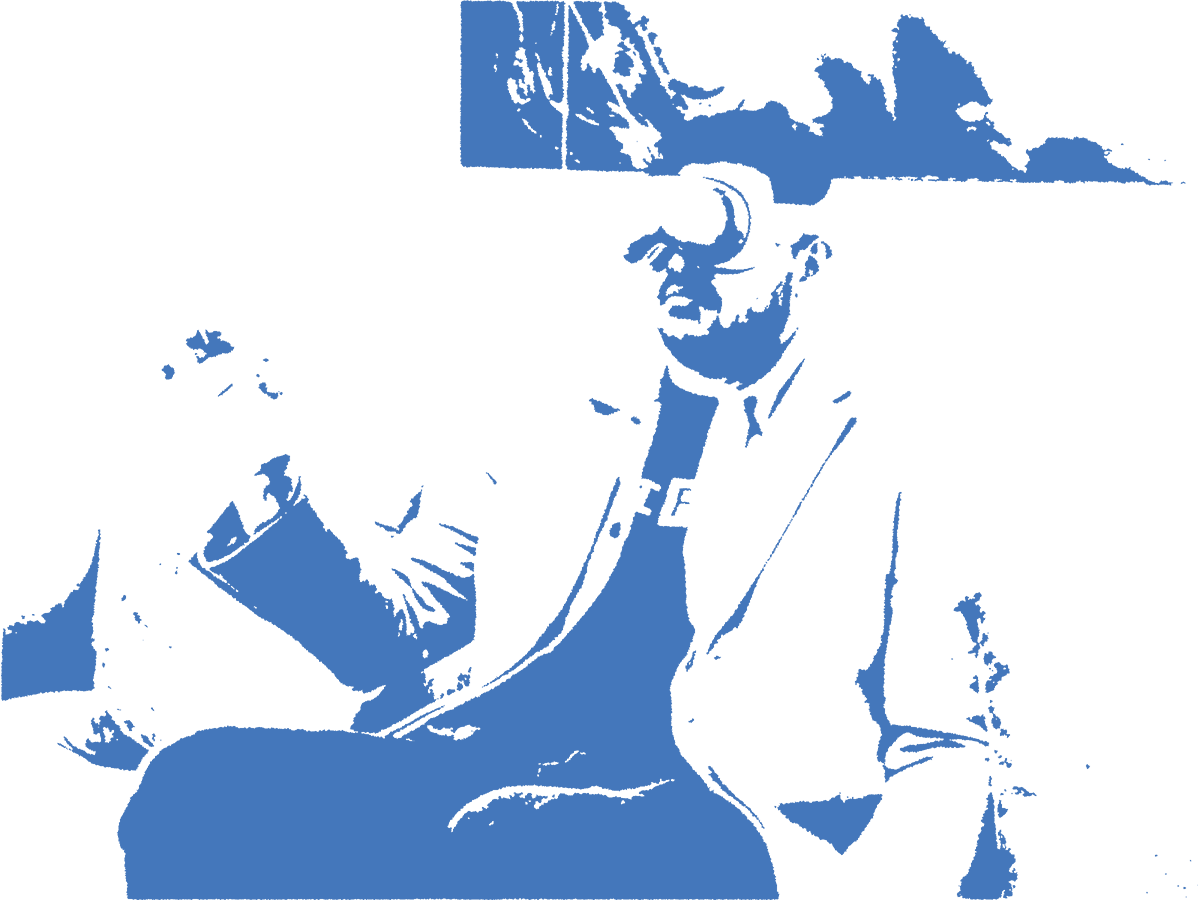
↑
Apple Vision Pro, Apple 2024
I still think there’s a beauty of not having that shit around and just being in nature; I mean,
I live in Chamonix in the mountains. Being immersed in nature is super important to me, so I
would be devastated to be in a world where everybody’s just attached to technology. But in a
way, we already are; I mean, if you walk around, what you’ll see is people just locked into
fucking TikTok all day. It worries me.
So on that topic, to each their own. But I hope some people care about being in nature and
without technology attached to them. That being said, there will undoubtedly be people locked
into the matrix. There’s no way around it.
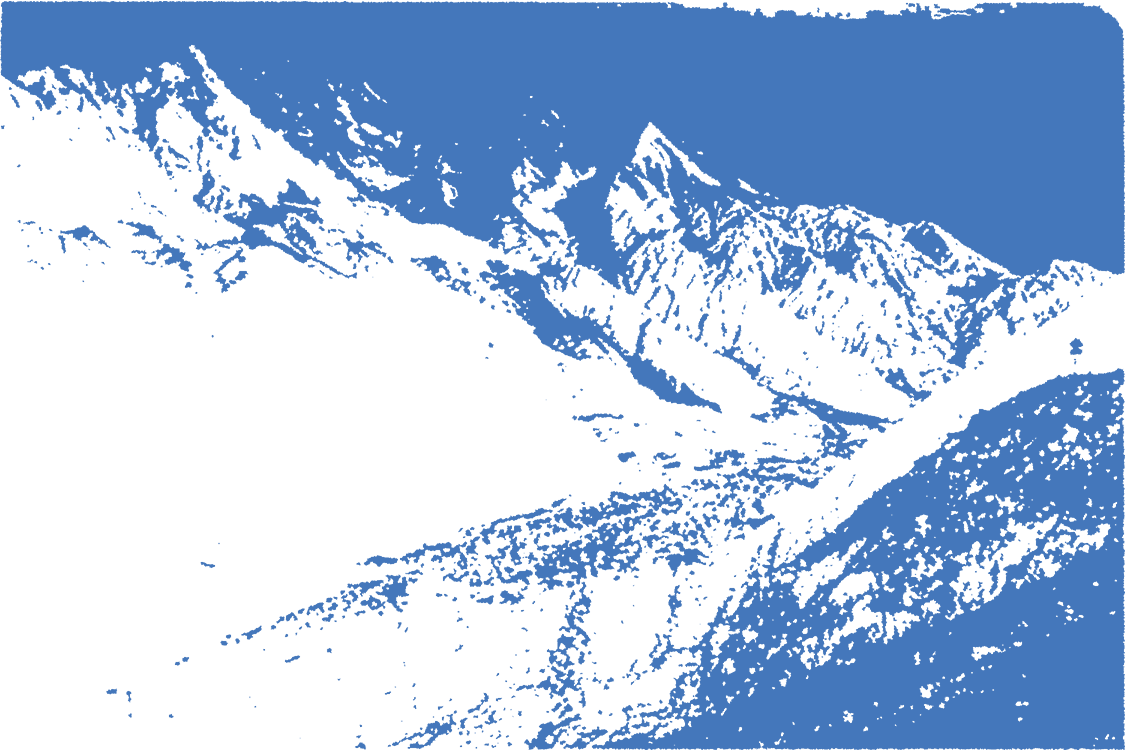
↑
Chamonix, France
CVA
I agree. These tools have a lot of potential for some beautiful things, but they’re a
double-edged sword.
On another topic, I know you’re a huge fan of Herbie Hancock and jazz music in general. Can you
mention a couple of albums or songs that inspired you as a designer and as a creator?
↑
DIA Studio for A-Trak’s live visuals, 2016
MP
When I was younger, Herbie was the person who got me into studying jazz. The album
Thrust was the one. Headhunters is a little more well-known, but
Thrust was the one for me. It’s live recorded in Japan. I was
in high school when I
heard it, and I just thought, this is fucking amazing. The sound of the Fender Rhodes created
the funk and the feel that took jazz out into a new space for me. I realized this is what I want
to figure out how to do. Weather Report and the album Heavy
Weather was also highly
inspirational. I was 16 or 17 then and loved people like Jaco Pastorius. I was really into that
fusion of funk and jazz. I also went to New Orleans and studied music there while finishing my
design degree. New Orleans is the motherland of funk and jazz. So I just got educated in all of
it.
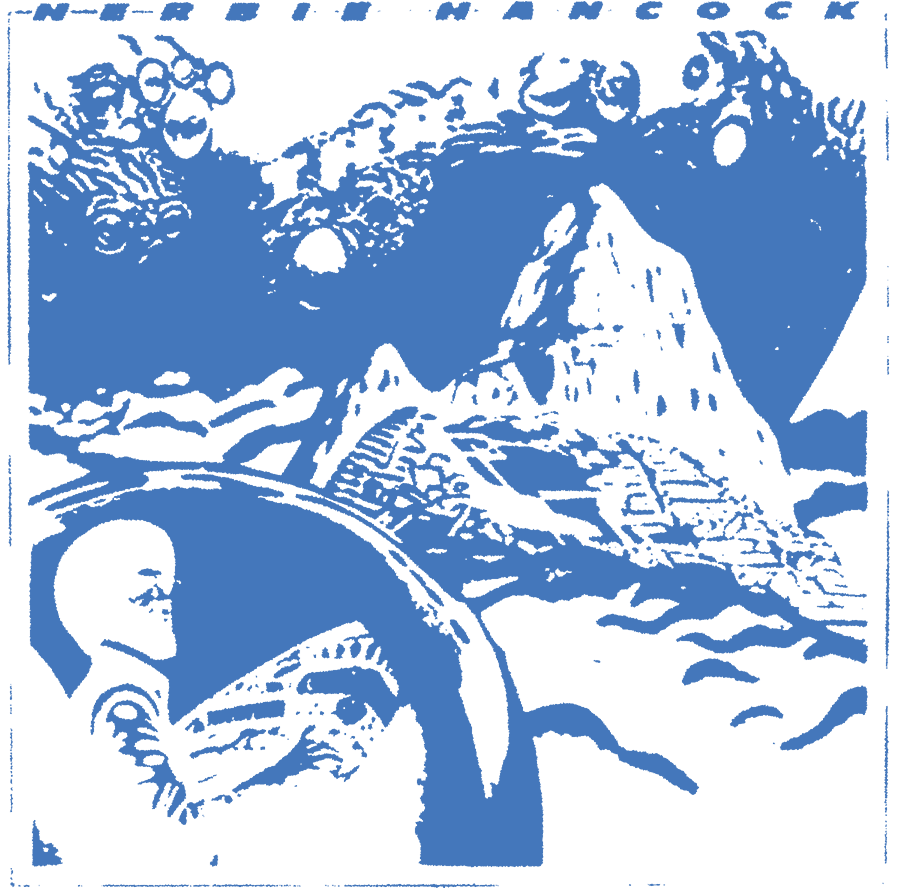
↑
Herbie Hancock Thrust, 1974, Album cover
I could go on and on. Lately, I’ve been influenced by music like J. Dilla and drum and bass artists
such as LTJ Bukem and Ronny Size. That’s excellent music to listen to when you’re doing type design,
it’s like fucking like 180 BPM, and you’re working on beziers, it’s great. Even now, I am just
discovering some more straight garage house music or stuff on SoundCloud because you have so much
access to music. Now you find stations of people you like and can constantly discover new things. So
I’m genre-less. I have a core taste for soul, funk, and jazz. But I love it all. There’s also a lot
of stuff coming out of the UK, such as Kamal Williams and Yussef Dayes. I find many of the UK scene
mixes house and techno with jazz influences interesting.
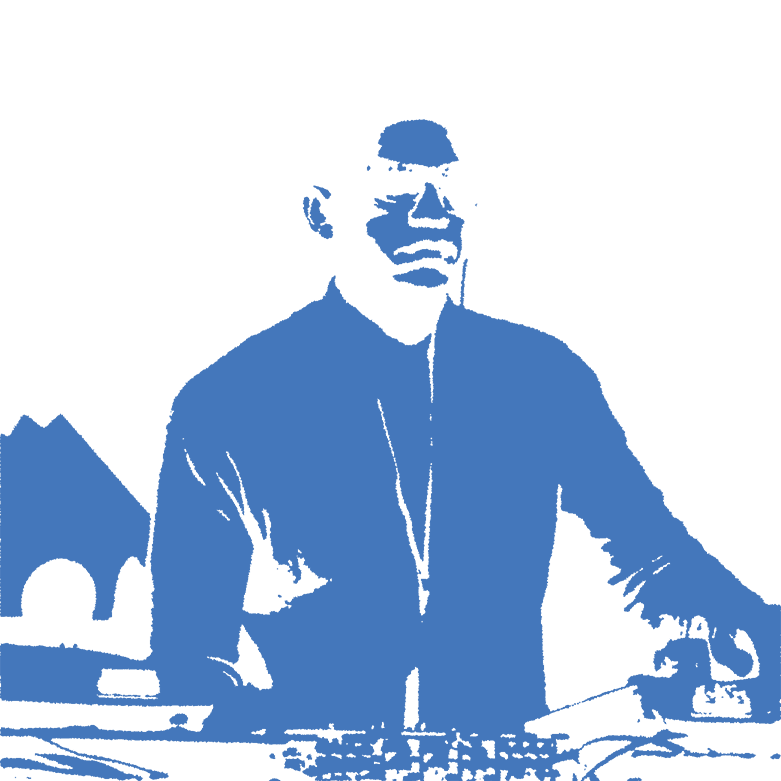
↑
LTJ Bukem
Another huge influence of mine is Wayne Shorter. I find his spiritual aspect fascinating, especially
his Buddhist practice and how that’s impacted his creativity. As we mentioned earlier, this idea of
analysis leads to paralysis. A lot of this stuff all follows into the same kind of space. It’s just
a way of life and a way of being. His quartet, which I saw live a few times, was Brian Blade, Wayne
Shorter, John Patitucci, and Danilo Pérez. The live performance just blew you out of your fucking
seat. It was just pure, intense improvisational energy for an hour. You’re just holding under your
seat like you’re on a rocket ship, and then you’re like, “holy fuck, what has happened to me.” That
was amazing. And I’m not sure what happened. It was so intense and so awesome.
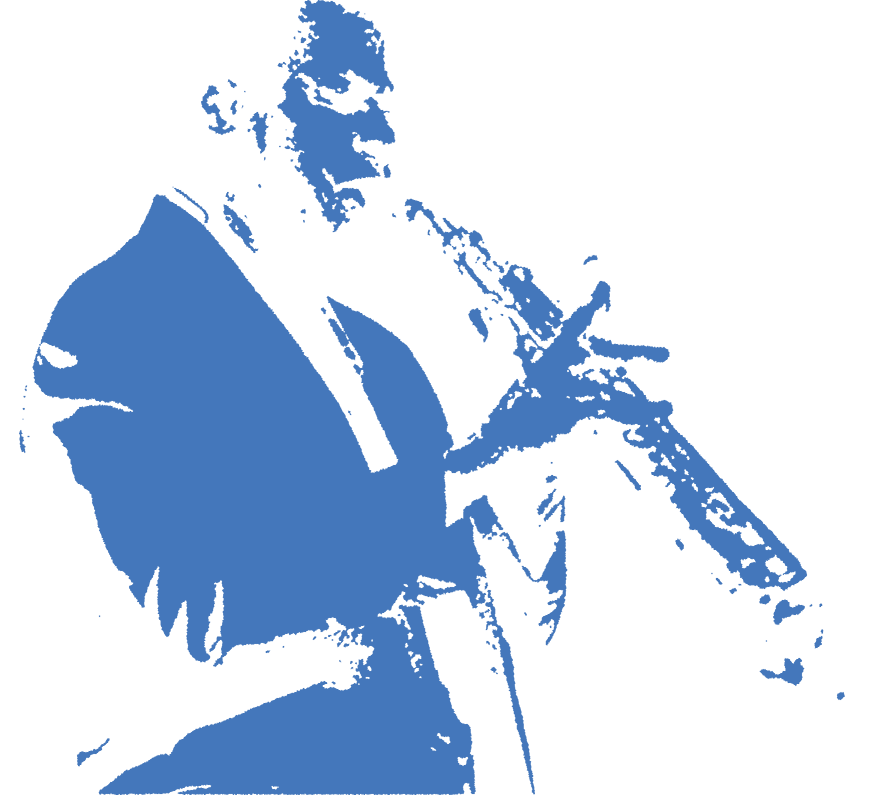
↑
Wayne Shorter
CVA
Do you have any advice for future designers who might read this during their early days of
design?
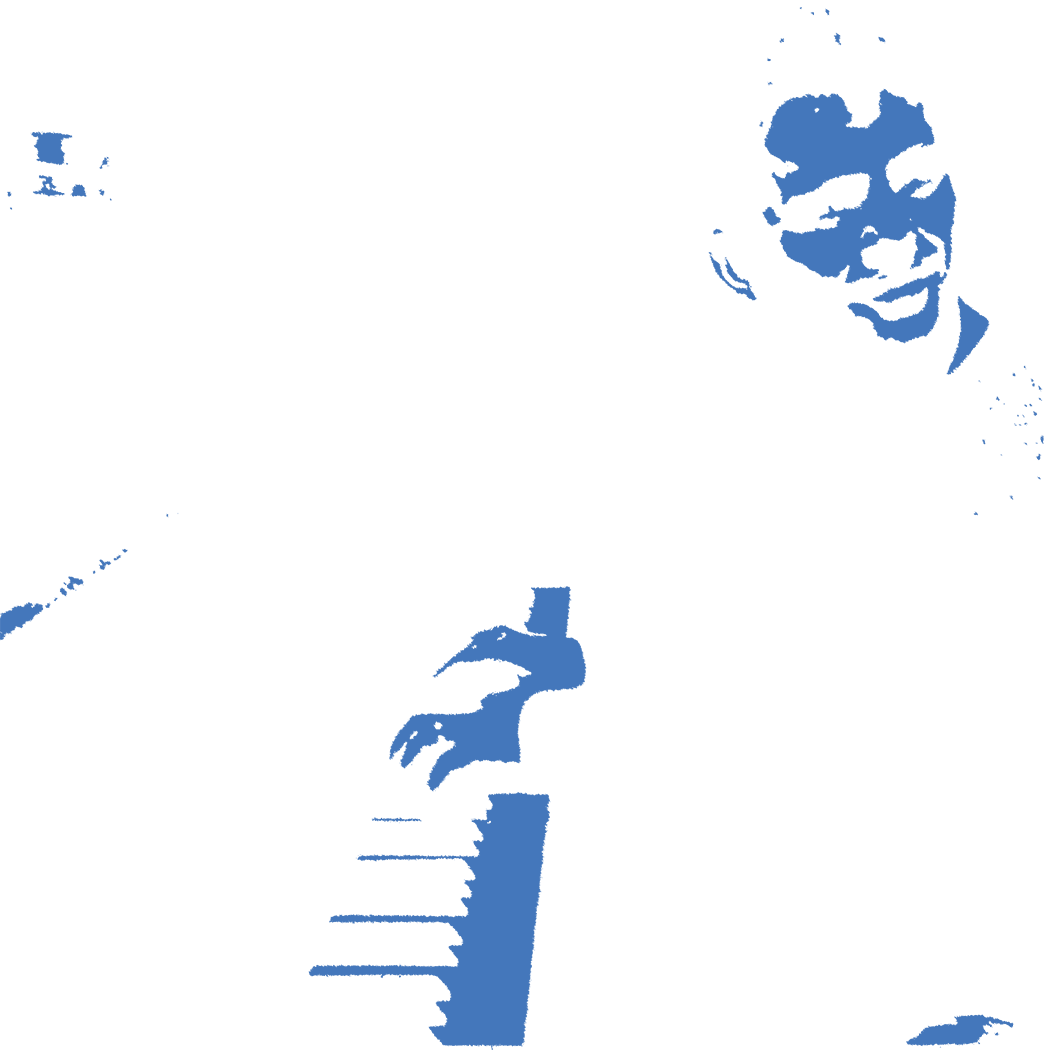
↑
Mitch Paone with piano
MP
There are two things. It is finding the space where you’re not being critical, and I think it’s hard to do that. But that might mean different things for different people. Such as how much sleep you get, whether you need a cup of coffee in the morning, what you’re eating, and all these lifestyle choices or inspirational ideas that can put you in a space that makes you feel comfortable. And it takes a while for people to optimize themselves in that way. You have to learn the design craft and study everything, but there’s a parallel between making yourself feel comfortable and happy and synergizing those things.
The second and perhaps most important thing is finding inspiration for design outside of strictly design. For instance, music drove my design practice. It drove how I thought about design since day one, and it continues to be a source of inspiration for the work. Having an interest that parallels to draw inspiration from will make the work more interesting and personal. And then it doesn’t get boring. You’re always finding ways of bringing these things and mixing them. Whether that’s poetry, writing, or journalism, finding other interests and then seeing how that can fuse with the technical side of design makes it more interesting.
You can’t just love design—I guess some people can—but there’s always inspiration. Ask yourself, what was your inspiration? Why did this person make it this way? There’s got to be more than just a beautiful form. There are richer narratives and personal stories to draw on. The people we think are masters were all probably finding inspiration and sources from an array of stuff that had nothing to do with a chair or a typeface.
So those are my two things. But it’s hard. It’s getting to know yourself. It’s tough to do when you’re young, on social media, and comparing yourself to others. But questions to ask are things like what makes you tick? What do you like? What defines your taste in things? It’s hard to define, and it takes a lot of trial and error and putting yourself out of your comfort zone. It’s just trying, testing, and being okay with falling down a few times.